“Hatshepsut: The Iconic Female Pharaoh of Egypt”
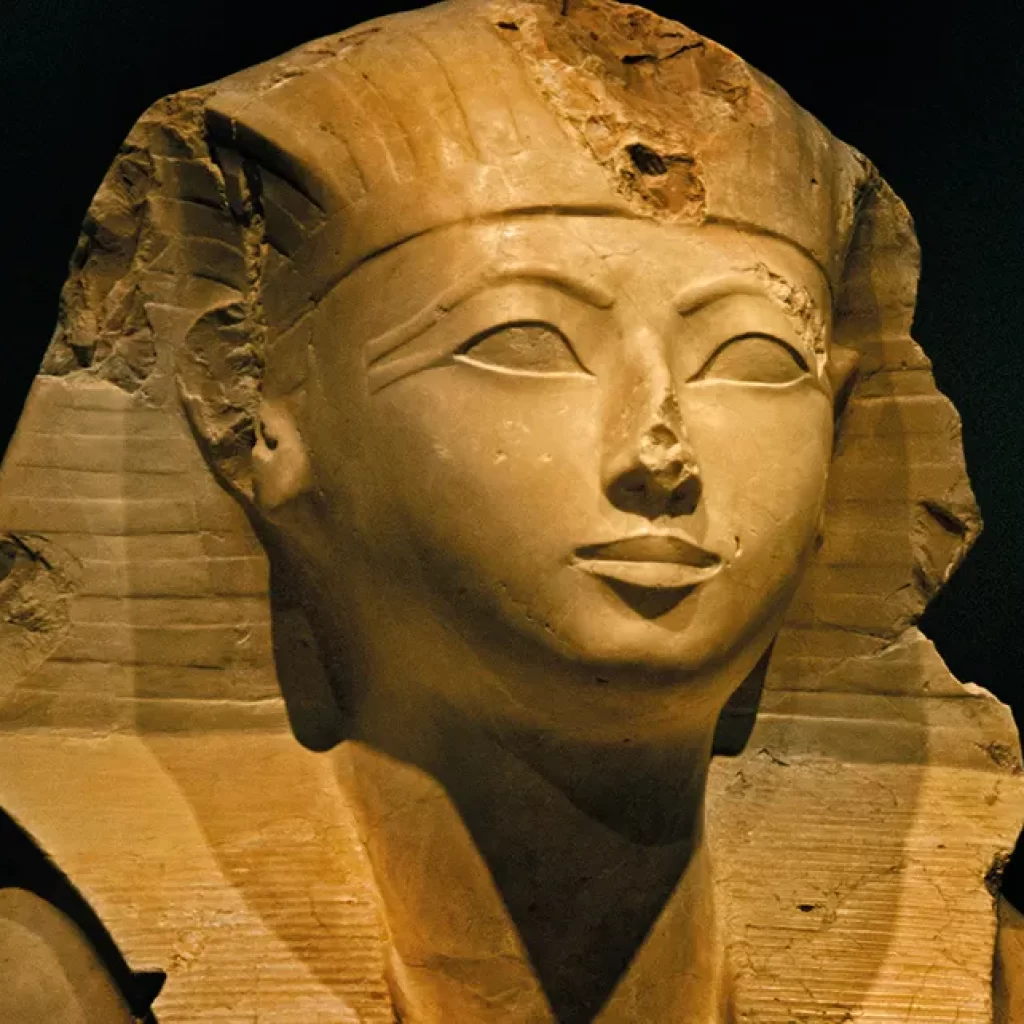
Contents:
- Introduction
- Early Life of Hatshepsut
- Hatshepsut’s Path to Power
- The Coronation of Hatshepsut
- Hatshepsut’s Architectural Legacy
- The Deir el-Bahari Temple
- Hatshepsut’s Foreign Expeditions
- Queen Reign and Governance
- The Mysterious Disappearance of Queen Legacy
- Rediscovery and Legacy of Hatshepsut
- Conclusion
- FAQs
Introduction
Hatshepsut, one of ancient Egypt’s most successful and intriguing pharaohs, was a woman who defied the norms of her time to ascend to the throne of one of history’s most powerful civilizations. Her reign, marked by prosperity, monumental architectural achievements, and innovative foreign expeditions, challenges our understanding of gender roles in ancient societies. This article delves into the life, achievements, and legacy of Queen, revealing the story of a woman who ruled as a king.
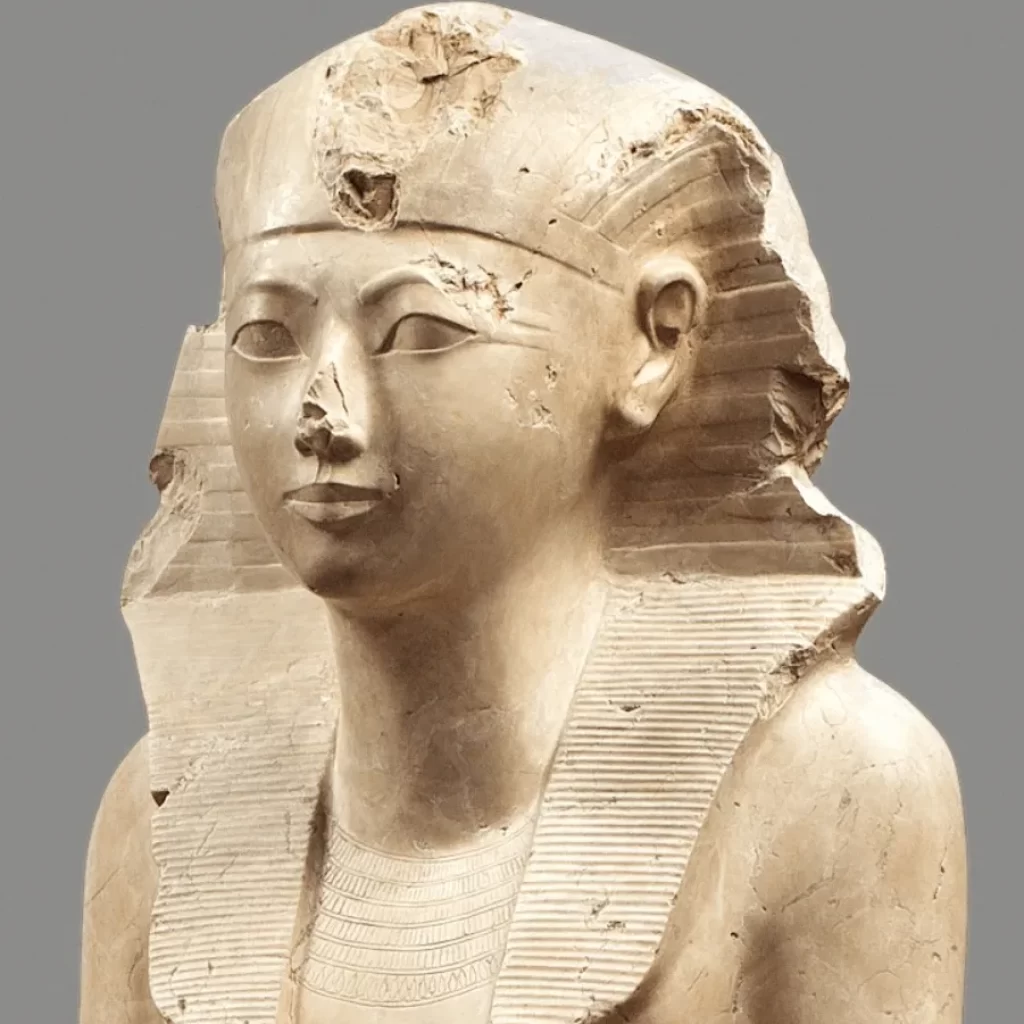
1. Early Life of Hatshepsut
Hatshepsut was born around 1507 BCE as the daughter of Pharaoh Thutmose I and Queen Ahmose. As a member of the 18th Dynasty, she was part of a family that would go on to shape the course of Egyptian history. Unlike most royal women of her time, Queen received an education in statecraft, preparing her for a life that would be anything but ordinary. Her early years were spent in the royal court, where she was immersed in the religious and political life of Egypt, laying the groundwork for her future role as a ruler.
2. Hatshepsut’s Path to Power
Queen ascent to power began with her marriage to her half-brother, As queen, Queen initially fulfilled the traditional role of a royal wife, but her ambitions soon became apparent. When Thutmose II died unexpectedly, his young son by a lesser wife, Thutmose III, was too young to rule. Seizing the opportunity, Hatshepsut declared herself regent and, within a few years, took on the full title and regalia of a pharaoh, ruling Egypt as a king rather than a queen.
3. The Coronation of Hatshepsut
Hatshepsut’s coronation was a bold move that defied traditional gender roles. She adopted the full regalia of a pharaoh, including the false beard, traditionally worn by male rulers. This symbolic act was a clear statement of her authority, signaling that she intended to rule as a king, not as a queen regent. Her coronation marked the beginning of a prosperous reign that would last for over two decades. Despite the initial controversy, Queen managed to consolidate power and gain the support of key officials and priests, ensuring the stability of her rule.
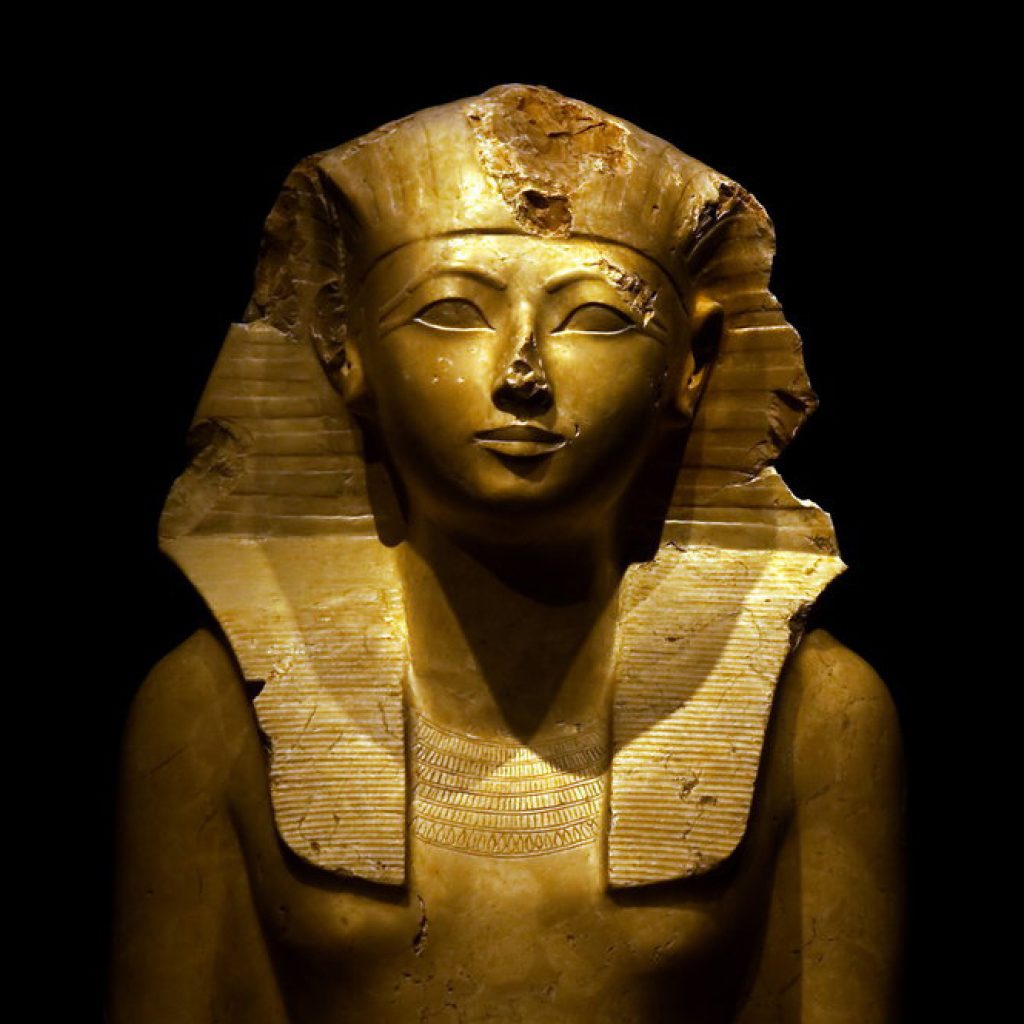
4. Hatshepsut’s Architectural Legacy
One of Queen most significant contributions to Egypt was her extensive building program. She initiated numerous construction projects that not only demonstrated her power but also aimed to legitimize her reign. Among her most famous architectural achievements is the magnificent mortuary temple at Deir el-Bahari, a masterpiece of ancient Egyptian architecture. Hatshepsut’s building projects were marked by innovation and grandeur, leaving a lasting legacy that would influence Egyptian architecture for centuries to come.
5. The Deir el-Bahari Temple
The temple of Deir el-Bahari, also known as the Djeser-Djeseru or “Holy of Holies,” is perhaps the most iconic of Hatshepsut’s constructions. with its terraces, colonnades, and ramps blending harmoniously with the surrounding landscape. The temple served as a place of worship and a monument to Queen divine birth and right to rule. The reliefs and inscriptions within the temple walls depict her divine conception, her relationship with the god Amun, and her achievements as pharaoh, solidifying her legacy in stone.
6. Hatshepsut’s Foreign Expeditions
Hatshepsut’s reign was not only marked by domestic achievements but also by ambitious foreign expeditions. One of the most famous was the expedition to the Land of Punt, a mysterious region believed to be located in the Horn of Africa. This expedition, depicted in great detail on the walls of her temple at Deir el-Bahari, brought back vast riches, including gold, incense, . The success of the Punt expedition showcased Queen ability to extend Egypt’s influence beyond its borders, enhancing her prestige and the prosperity of her kingdom.
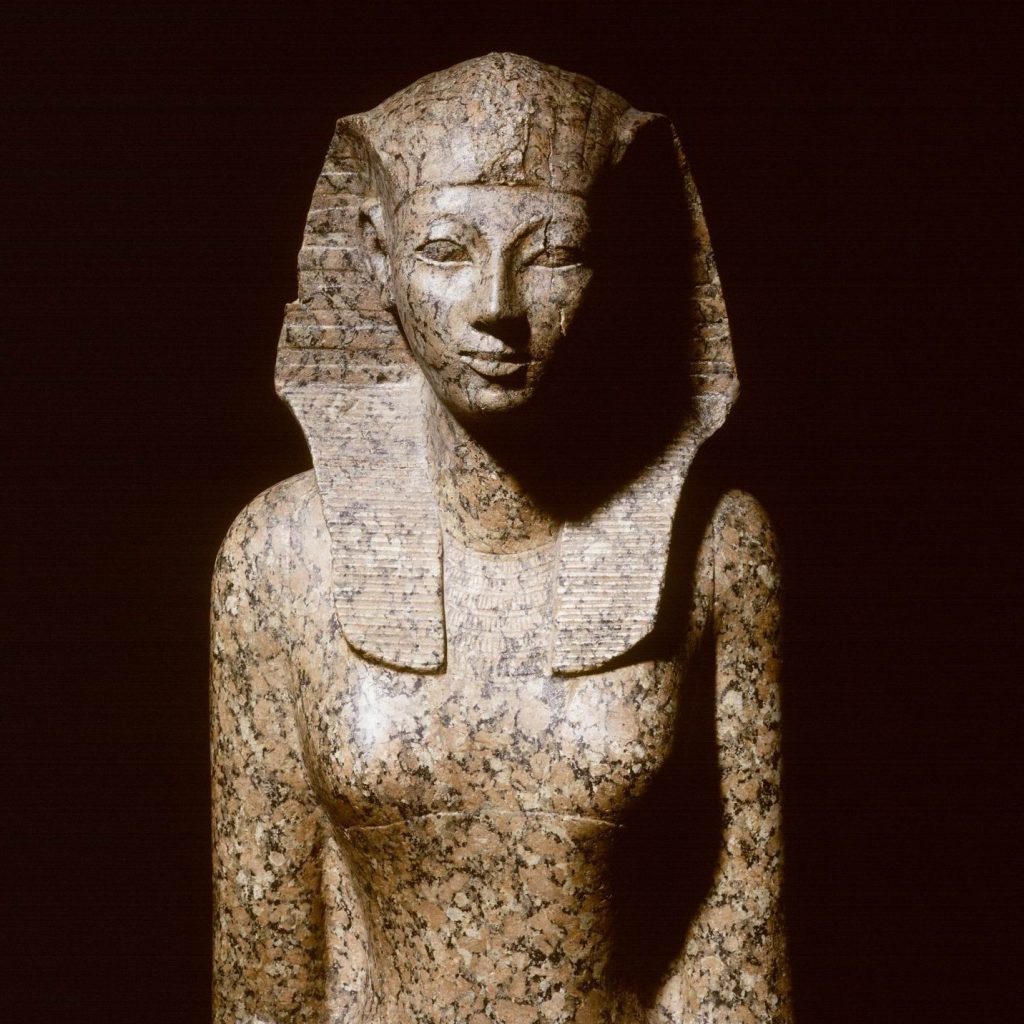
7. Queen Reign and Governance
Hatshepsut’s reign is often described as a period of peace and prosperity. She focused on internal development, strengthening Egypt’s economy through trade and extensive building projects. Queen also maintained the traditional religious practices of Egypt, presenting herself as the chosen of the gods, particularly Amun, to legitimize her rule. Her governance style was marked by stability and continuity, ensuring that Egypt remained a powerful and unified state during her reign. Her ability to maintain control in a male-dominated society is a testament to her political acumen and leadership skills.
8. The Mysterious Disappearance of Queen Legacy
After Queen death, her legacy faced an unexpected and deliberate attempt to erase her from history. Thutmose III, who succeeded her, ordered the defacement of her images and the erasure of her name from monuments. This act of damnatio memoriae, or condemnation of memory, led to Queen near-complete disappearance from historical records for centuries. Scholars have debated the reasons for this, with theories ranging from Thutmose III’s desire to legitimize his own rule to a broader attempt to restore traditional male succession. Despite these efforts, Queen legacy endured, thanks in part to her monumental constructions and the eventual rediscovery of her story.
9. Rediscovery and Legacy of Hatshepsut
Queen story was rediscovered in the 19th century when archaeologists uncovered her temple at Deir el-Bahari and other monuments bearing her name. The rediscovery of her mummy in 2007 further sparked interest in Queen is celebrated as one of Egypt’s greatest pharaohs and a pioneering female ruler who defied the conventions of her time. Her story has inspired countless studies, documentaries, and exhibitions, highlighting her achievements .

10. Conclusion
Hatshepsut’s reign stands as a remarkable chapter in the history of ancient Egypt. As a female pharaoh, she broke through the barriers of her time, ruling with strength, wisdom, and vision. Her legacy, once nearly erased, has been restored and celebrated, offering a powerful example of leadership and resilience. Queen story continues to captivate scholars and the public alike, serving as a reminder of the complexities of power, gender, and memory in history.
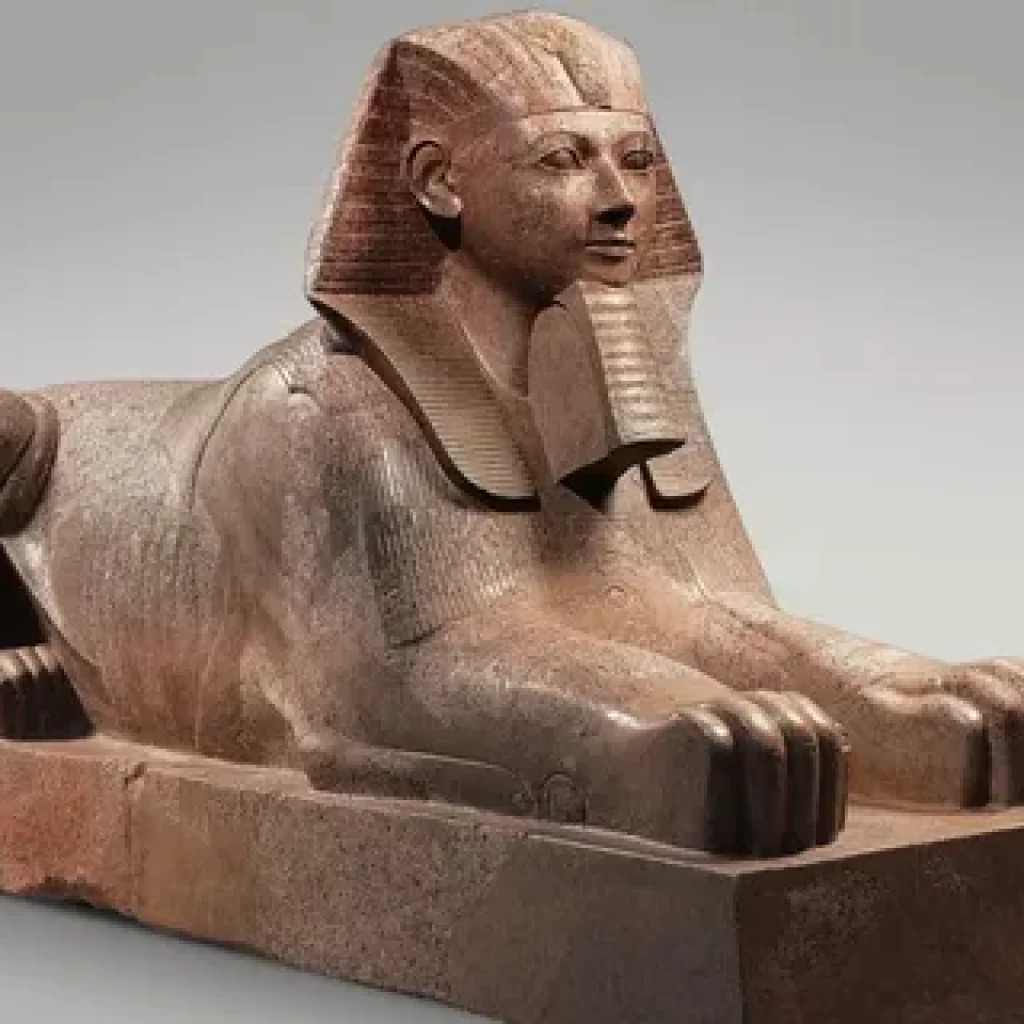
FAQs
- Who was queen Hatshepsut?
Queen was a female pharaoh of ancient Egypt, ruling during the 18th Dynasty. - What dynasty Hatshepsut become pharaoh?
Queen became pharaoh by first serving as regent for her stepson, Thutmose III, before declaring herself king. - How is Hatshepsut ?
Queen is known for her extensive building projects, including the temple at Deir el-Bahari, and her successful trade expeditions. - Why was Hatshepsut’s legacy erased?
Queen legacy was erased likely due to political reasons, as Thutmose III sought to legitimize his own rule by removing her from history. - What was the Punt expedition?
The Punt expedition was a trade mission initiated by Hatshepsut that brought back valuable goods to Egypt, enhancing the kingdom’s wealth. - Where is Hatshepsut’s temple located?
Queen temple is located at Deir el-Bahari, near Luxor. - When was Hatshepsut’s mummy discovered?
Queen mummy was identified in 2007, confirming her place in history as one of Egypt’s most significant rulers.





Comment (0)